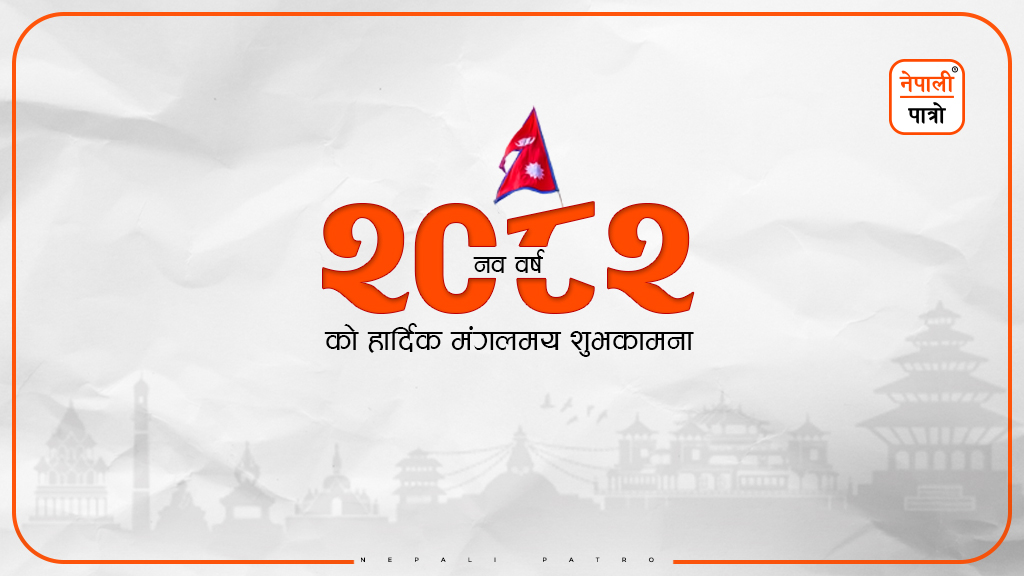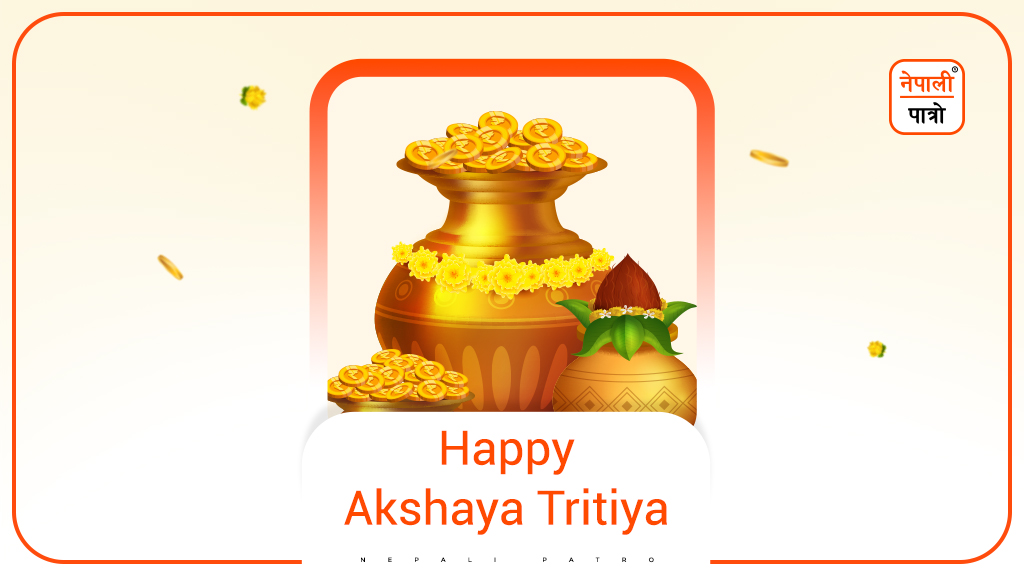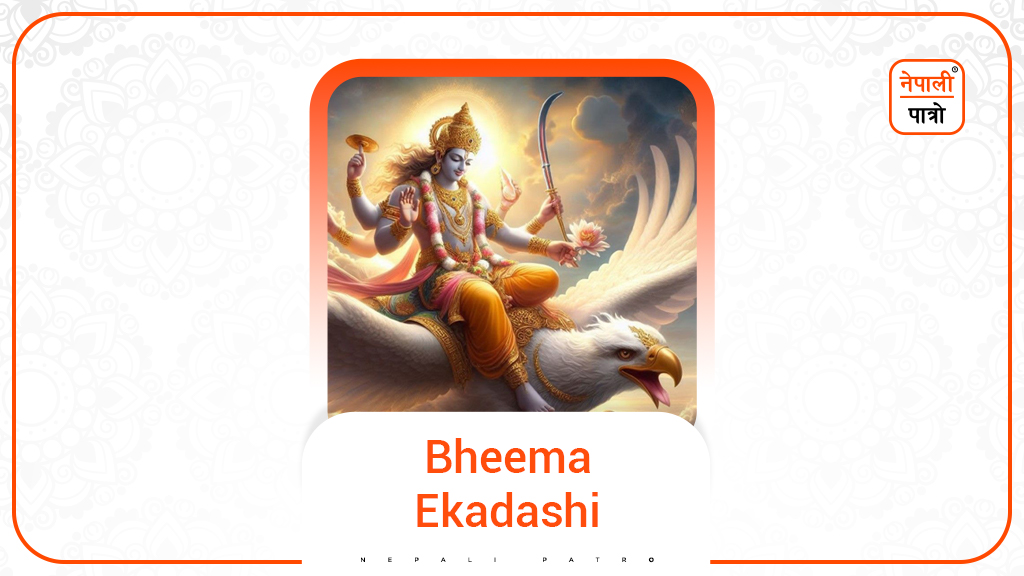
New Year 2082, New Year’s Resolution
On the joyous occasion of New Year 2082, Nepali Patro warmly extends its heartfelt wishes for happiness, peace, and prosperity to all Nepali brothers and sisters.
In Nepal, Bikram Sambat/ Vikram Samvat (B.S) is a universally accepted national calendar. On this basis, the National Calendar or calendar of Nepal is prepared. Each year, the new Sambat starts after Chaitra Sankranti (mid-April). The new Samvat begins every year with the Baisakh Sankranti and ends with the Chaitra month. Among all the calendars of the world, Vikram Samvat is considered the most scientific and is based on the movement of the Sun and nature.
The Sun is the regulator of the world, time, and nature. In the Vedas, the Sun (Suryanarayana) is referred to as the soul of the universe (सूर्य आत्मा जगतस्थुषः). This is said because the Sun is the direct sustainer of the entire animate and inanimate world. Vikram Samvat is based on the movement of the Sun. The twelve months like Baisakh, Jestha, etc., are the twelve zodiac signs of the Sun. The sun takes one month to rotate around a particular zodiac. The solar value (saurman) is calculated on the basis of the Sun’s principle (Surya Siddhanta).
There is nothing else in the world like the Sun, regular and bright. In the Vedas, the Sun is considered as the eye (Chachyu) of the Supreme God. The Sun is regarded as the direct deity who watches the world. In the dawn, the sun showers nectar rain thus, the world receives energy in the morning. The heat of the Sun can cure many diseases. So, the sunrise has great glory and importance. All gods bow their heads at the feet of the Sun and pray; even Lord Shiva worships with folded hands to Surya Narayan during sunrise and sunset. People worship the Sun through the sacred Gayatri mantra. The Sun is the most frequently mentioned deity in the Vedas.
Surya Dev is the regulator of time. Era(yuga), year, season, month, fortnight, day, prahar, hour, minute, second, ghadi, pala, kshan – all these are measured based on the movement of the Sun. When Surya Narayan reaches the mid of the sky or during midday, our watch shows precisely 12 o’clock. Therefore, each country determines its national time by observing the Sun when it reaches the middle of the sky from a fixed central point. Due to the difference in location, different countries have different times.
History of Bikram Sambat
After the passing of 3000 years of Kali Yuga, Vikram Samvat was started by King Vikramaditya. Historians indicate that the evidence at Battisputali and Bajrayogini provides insights into Bikramaditya, who arrived in Kathmandu, settled the debts of the people, ascended to the throne, and established Bikram Sambat. Later, Vikram Samvat was formally brought into practice in Nepal in the year 1960 by then Prime Minister Chandra Shamsher. Before that, Shak Samvat and Nepal Samvat were used and then found impractical for governmental work, so based on the suggestions of astrologers of that time, the most scientific, practical, and historical Vikram Samvat was implemented. Vikram Samvat is 56 years, 9 months, and 15 days older than the Gregorian calendar (AD).
Baishakh 1: The Beginning of the New Year
Baisakh 1st is the first day of the new year. It is believed that from this day, the Sun, Moon, and other nine planets begin their motion and the process of creation begins. At this time, the regulator (Jagchacchyu) Surya Narayan enters zodiac Mesh (Aries) from zodiac Min (Pisces). In astrology, Aries is considered the exalted sign of the Sun. After the Sun enters its exalted sign, the New Year begins, and nature experiences renewal. Old leaves on trees are replaced by new buds. The sky becomes clear. The days become longer and warmer. All living beings feel joy. Humans, too, are filled with happiness.
With the arrival of the New Year, the thinking of people also changes. Each New Year makes a person more mature. Therefore, with the resolution to abandon all the bad things done in the past, to walk on the path of truth, and with the purpose of changing lives in a different way people move forward with different hopes.
In the New Year, the radiance of Suryanarayan fills humans with new zeal, energy, and enthusiasm. At this time, various good wishes are exchanged. New resolutions are made. If a person can embrace all these aspects, there will be real change in life. For this, strong willpower, determination, self-confidence, and activeness are needed. To obtain all these, blessings from Surya Narayan and one’s personal deity (Ishtadev) are required.
Prosperity is in the hands of every person. “उद्यमेनैव सिध्यन्ति कार्याणि न मनोरथैः।” hat means, only wishing doesn’t fulfill desires; one must take action. Only through repeated efforts does one attain results. If the goal’s summit is small, how can one reach the top of Mount Everest? Therefore, the target should be as high as Everest’s summit. Only then can the peak be reached.
The Sun is a bundle of radiance, whose slightest touch makes many flowers bloom. If you put the Sun’s rays inside your brain, you will become like a fragrance of the flower in the world. Suryanarayan is the source of thousands of inspirations. Just make an effort to follow a regular discipline, and you, too, can become a source of inspiration for thousands. Surya Narayan rises at the appointed time and sets at the appointed time. There is no up or downside to its timing. If you fulfill your duties at the right time, success will follow you like the morning glow of the Sun. Ramabhakta Hanuman became a good disciple who received the education of Suryanarayan. Just as Hanuman’s fame from the Treta Yuga is still celebrated today, you too can achieve greatness.
A year is the time the Sun takes to complete one revolution or the time the Earth takes to orbit once. But for a short-lived human, a year is not a small time. With each passing New Year, a person’s lifespan decreases by one year. Within this shrinking time span, every person must pass through the four stages of Dharma, Artha, Kama, and Moksha. Making life meaningful is to attain godliness in the end. Therefore, based on age and circumstances, one must set their goals. God resides in the soul of every man. If you can awaken the God within through self-reflection, your life will become meaningful.
On New Year’s Day, one must worship the Sun and their personal deity (Ishtadev), participate in various religious and social activities, visit nearby temples, offer prayers and worship, and teach the children their traditions in advance so that they can follow them in the future.
On this day, all family members can sit down, review the past year’s work and expenditures, and formulate new plans. One can also plan new goals for work, studies, business, etc., for the New Year and start with new resolutions and actions today.
Finally:
सर्वे भवन्तु सुखिन: सर्वे सन्तु निरामया:।
सर्वे भद्राणि पश्यन्तु मा कश्चिद् दु:खभाग्भवेत् ।।
सर्वेषां स्वस्तिर्भवतु।
सर्वेषां शान्तिर्भवतु।
सर्वेषां मङ्गलं भवतु।।




April 18, 2022 4 years
good